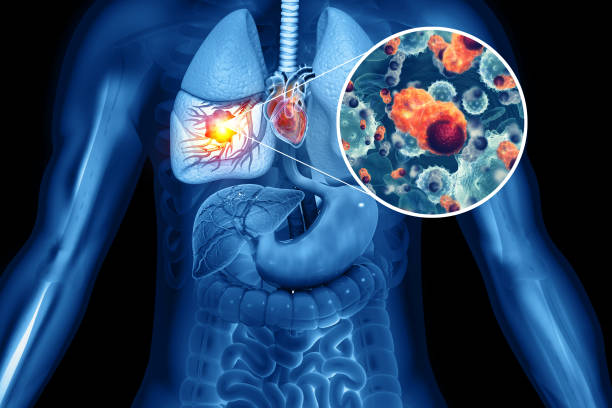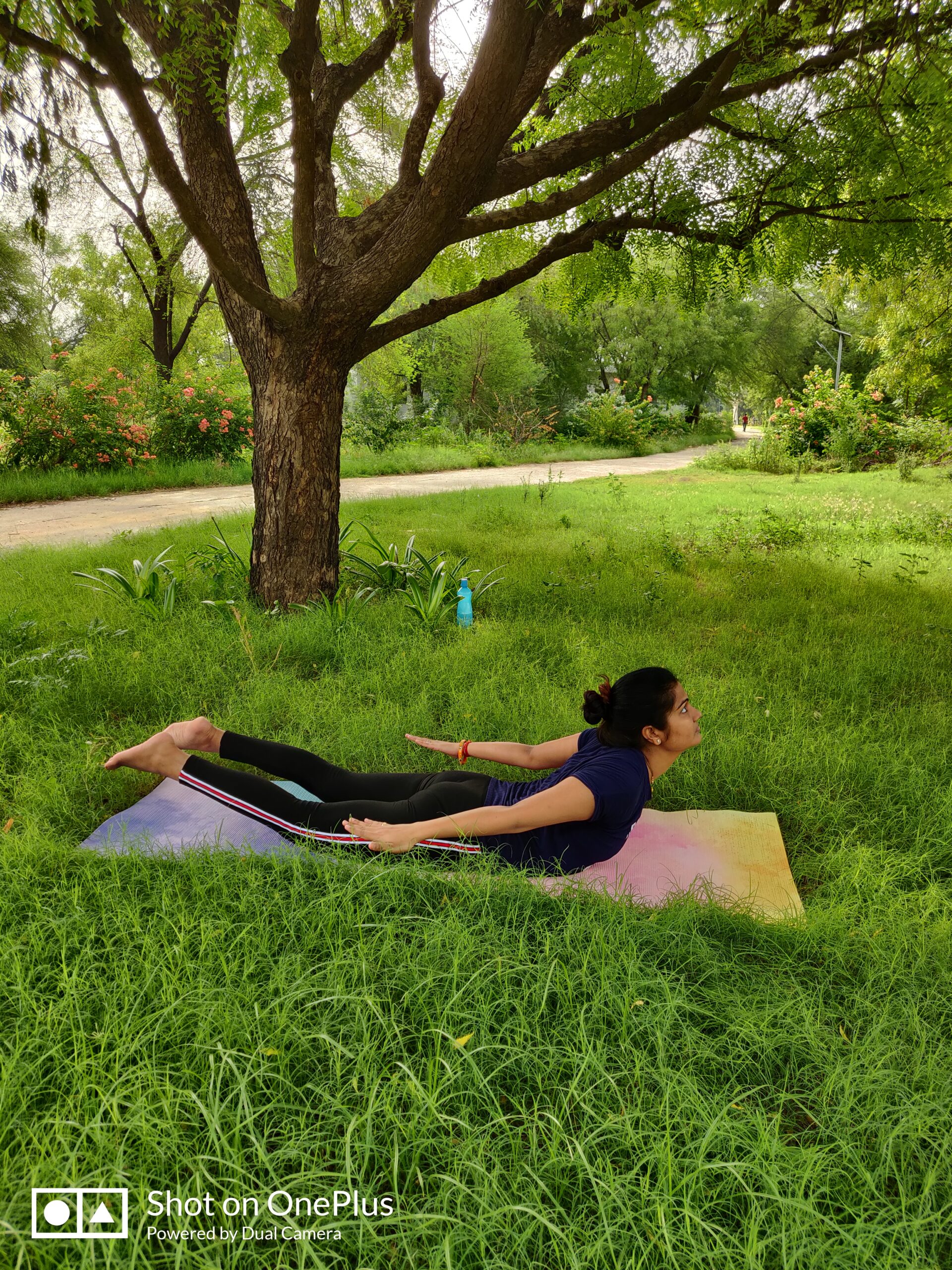Introduction: Asthma, a chronic respiratory condition, can disrupt daily life and breathing. While conventional treatments exist, naturopathic approaches offer holistic solutions to alleviate asthma symptoms, enhance lung function, and improve overall well-being. In this article, we delve into the various naturopathic strategies and techniques for managing asthma and achieving respiratory health.
Causes of Asthma: Asthma, a chronic respiratory condition, can have multifaceted origins. Understanding the underlying causes is vital for effective management:
- Genetic Factors: A family history of asthma increases susceptibility.
- Allergies: Exposure to allergens like pollen, dust mites, pet dander, and mold can trigger asthma.
- Environmental Factors: Air pollution, smoke, and chemical irritants contribute to asthma development.
- Respiratory Infections: Early viral infections may increase the risk, especially in childhood.
- Occupational Exposures: Certain workplaces have allergens or irritants that can trigger asthma.
- Obesity: Excess weight may worsen inflammation and impact lung function.
- Hygiene Hypothesis: Limited early exposure to germs may lead to immune system imbalance.

Common Symptoms of Asthma: Asthma symptoms can vary in frequency and intensity among individuals:
- Shortness of Breath: Difficulty breathing, especially during physical activity or at night.
- Chest Tightness: A sensation of pressure or constriction in the chest.
- Wheezing: High-pitched whistling sound while breathing, often during exhalation.
- Coughing: Persistent cough, especially at night or early in the morning.
- Increased Mucus Production: Excess mucus in the airways, leading to congestion.
- Trouble Sleeping: Asthma symptoms can worsen at night, affecting sleep quality.
- Exacerbation Triggers: Symptoms worsen with exposure to allergens, cold air, smoke, or respiratory infections.
Differentiating Asthma Severity:
- Intermittent Asthma: Occasional symptoms with long periods of normal lung function.
- Mild Persistent Asthma: Symptoms occur more often but are still manageable.
- Moderate Persistent Asthma: Symptoms are more frequent and impact daily activities.
- Severe Persistent Asthma: Symptoms are constant, limiting physical activity and requiring intensive management.
When to Seek Medical Attention:
While mild asthma symptoms can often be managed, medical attention is recommended if:
- Symptoms worsen, become more frequent, or disrupt daily life.
- Asthma attacks require emergency inhaler use.
- Sleep is disturbed due to asthma symptoms.
- Breathing becomes rapid and shallow, or lips and nails turn blue.
Naturopathy: A Holistic Approach to Asthma Management:
- Principles of Naturopathic Medicine: Treating the Whole Person
- Enhancing Vitality and Immunity: Supporting the Body’s Self-Healing Mechanisms
- Individualized Treatment Plans: Tailoring Approaches to Each Patient

Steam Therapy for Asthma Relief:
- Mechanism: Steam inhalation involves inhaling warm, moist air to soothe and open airways.
- Benefits: Eases breathlessness, clears mucus, and reduces airway inflammation.
- Eucalyptus Addition: Adding eucalyptus oil to steam enhances the anti-inflammatory effect.
- Hydration: Steam helps keep airways moist and promotes effective mucus clearance.

Acupuncture Therapy for Asthma Management:
- Balancing Energy Flow: Acupuncture aims to restore the balance of vital energy (Qi) within the body.
- Needling Techniques: Fine needles stimulate specific points related to respiratory function.
- Benefits: Reduces bronchial inflammation, enhances lung function, and promotes relaxation.
- Stress Reduction: Acupuncture calms the nervous system, which can alleviate asthma triggers.

Synergistic Benefits:
- Combined Relief: Steam therapy opens airways, making acupuncture more effective.
- Inflammation Reduction: Both therapies work to reduce airway inflammation.
- Stress Management: Acupuncture’s calming effect complements the relaxation induced by steam therapy.
Consultation with Professionals:
- Certified Practitioners: Seek guidance from licensed acupuncturists and experienced steam therapists.
- Customized Approach: Professionals tailor treatments to individual asthma severity and health history.
- Safe Practice: Professionals ensure proper techniques to avoid burns or discomfort.
Integration with Conventional Care:
- Collaborative Approach: Combine steam therapy and acupuncture with prescribed medications.
- Consulting Healthcare Providers: Communicate with medical professionals for coordinated asthma management.
Kunjal Kriya Technique:
- Preparation: Perform Kunjal Kriya on an empty stomach in the morning.
- Saline Solution: Mix a pinch of salt in warm water (not hot) until dissolved.
- Drinking: Slowly drink the saline solution until the stomach feels full.
- Inducing Vomiting: Perform the vomiting action gently until the stomach is empty.
- Rinsing: Gargle and rinse the mouth and throat thoroughly with plain water.

Precautions and Considerations:
- Consultation: Consult a certified yoga instructor or healthcare professional before attempting Kunjal Kriya, especially if you have pre-existing medical conditions.
- Gentleness: Perform the process gently to avoid straining or discomfort.
- Hydration: Stay well-hydrated after the practice to maintain electrolyte balance.
Integration with Asthma Management:
- Complementary Practice: Kunjal Kriya can complement other asthma management techniques.
- Regular Practice: Incorporating Kunjal Kriya into a routine for sustained benefits.
- Individualized Approach: Modify the technique as needed based on asthma severity and health status.
Jal Neti Technique:
- Preparation: Use a clean, sterilized neti pot and prepare a saline solution (warm water and salt).
- Position: Lean over a sink, tilt your head sideways, and insert the neti spout into the upper nostril.
- Flow of Water: Gradually pour the saline water into the upper nostril, allowing it to flow out of the lower nostril.
- Breathing: Breathe through your mouth during the process to avoid water entering the lungs.
- Rinse and Repeat: After completing one side, switch to the other nostril and repeat the process.

Precautions and Considerations:
- Sterilization: Ensure the neti pot is clean and sterilized to prevent infections.
- Saline Solution: Use the right proportion of salt to water for a comfortable experience.
- Consultation: Consult a certified yoga instructor or healthcare professional before attempting Jal Neti, especially if you have sinus conditions or medical concerns.
Methods of Body Detoxification:
- Nutritional Detox: Consuming whole foods, fiber-rich vegetables, and hydrating liquids.
- Fasting: Intermittent fasting or juice fasting to give the digestive system a break.
- Hydration: Drinking ample water helps flush toxins from the body.
- Sweating: Engaging in activities that induce sweat, such as sauna or exercise.
- Herbal Support: Incorporating detoxifying herbs like dandelion, milk thistle, and turmeric.
- Colon Cleansing: Enemas or colonics to remove waste from the colon.
Mind-Body Detox Connection:
- Stress Reduction: Stress management techniques like meditation and yoga aid detoxification.
- Emotional Release: Emotional detox through practices like journaling and mindfulness.
- Holistic Well-Being: Addressing mental and emotional toxins for overall balance.

Consulting Professionals:
- Healthcare Provider: Consultation before embarking on any detox program, especially if you have pre-existing health conditions.
- Holistic Practitioners: Certified naturopaths or nutritionists for personalized detox plans.
Dietary Modifications for Asthma Relief:
- Anti-Inflammatory Foods: Incorporating Omega-3 Fatty Acids and Antioxidants
- Hydration: Drinking Adequate Water to Keep Airways Moist
- Avoiding Trigger Foods: Identifying and Eliminating Allergenic Foods
Herbal Remedies and Supplements:
- Turmeric: Natural Anti-Inflammatory Agent for Airway Health
- Ginger: Reducing Bronchial Inflammation and Promoting Lung Health
- Magnesium: Supporting Lung Function and Relaxing Bronchial Muscles

Breath Control Techniques:
- Pranayama: Kapalabhati and Bhastrika for Respiratory Vitality
- Deep Breathing Exercises: Enhancing Lung Capacity and Oxygenation
- Mindful Breathing: Calming the Nervous System and Easing Breathlessness
Yogic Practices for Asthma Relief:
- Sukhasana (Easy Pose): Cultivating Relaxation and Breath Awareness
- Pavanamuktasana (Wind-Relieving Pose): Aiding Digestion and Reducing Bloating
- Ardha Matsyendrasana (Half Lord of the Fishes Pose): Enhancing Lung Function and Spinal Mobility
Hydrotherapy for Respiratory Wellness:
- Steam Inhalation: Easing Breathing and Clearing Airways
- Warm Compresses: Relaxing Muscles and Reducing Chest Tightness
Stress Management and Mind-Body Techniques:
- Meditation: Reducing Stress and Calming the Mind
- Progressive Muscle Relaxation: Easing Muscular Tension and Promoting Relaxation

Consulting a Certified Naturopathic Practitioner:
- Comprehensive Assessment: Identifying Underlying Imbalances and Triggers
- Personalized Treatment Plans: Integrating Various Naturopathic Approaches
- Collaboration with Healthcare Professionals: Coordinated Care for Optimal Results
Integrative Approach with Conventional Care:
- Complementary Therapies: Combining Naturopathy with Medical Treatments
- Collaborating with Healthcare Professionals: Enhancing Asthma Management
Promoting Long-Term Respiratory Health:
- Sustained Wellness: Integrating Naturopathic Practices into Daily Life
- Building Resilience: Strengthening Immunity and Lung Function
- Empowerment through Education: Asthma Prevention and Management
Yogic Philosophy and Asthma:
- Holistic Approach: Balancing Physical, Mental, and Energetic Aspects
- Enhancing Prana: Vital Life Force and Respiratory Well-being
- Mind-Body Connection: Calming the Mind to Ease Breathing

Yogasanas for Asthma Relief:
- Sukhasana (Easy Pose): Encourages a comfortable seated posture, promoting relaxation and mindful breath awareness.
- Bhujangasana (Cobra Pose): Opens the chest and improves lung capacity, aiding in deep breathing.
- Ardha Matsyendrasana (Half Lord of the Fishes Pose): Enhances lung function and spinal flexibility, promoting better breath control.
- Setu Bandhasana (Bridge Pose): enhancing respOpens the chest and improves lung expansion, iratory efficiency.
- Virabhadrasana II (Warrior II Pose): Enhances lung capacity, and deep breathing in this pose can help improve respiration.
Pranayama for Respiratory Vitality:
- Anulom Vilom (Alternate Nostril Breathing): Balances prana and enhances respiratory efficiency.
- Bhastrika Pranayama (Bellows Breath): Improves lung capacity and oxygenation.
- Ujjayi Pranayama (Victorious Breath): Creates a calming effect and supports lung health.

Mindfulness and Relaxation Techniques:
- Yoga Nidra (Yogic Sleep): Deep relaxation technique that calms the nervous system and improves overall well-being.
- Deep Relaxation (Shavasana): Promotes relaxation and reduces stress-induced breathlessness.
Daily Routine for Asthma Management:
- Morning Practice: Start the day with gentle stretches, pranayama, and relaxation techniques to set a calm tone.
- Breath Awareness: Throughout the day, practice mindful breathing to maintain optimal lung function.
- Evening Practice: Engage in a more extended session of yogasanas and pranayama to unwind and ease any accumulated stress.
Personalized Approach and Consultation:
- Certified Yoga Instructor: Guidance on proper alignment and suitable practices for individual needs.
- Modifications: Adapting poses and techniques based on asthma severity and comfort level.
- Consistency: Regular practice for gradual improvement in lung function and overall well-being.
Complementary with Medical Care:
- Collaboration with Healthcare Professionals: Integrating yogic practices with medical treatments for enhanced asthma management.
- Monitoring Progress: Tracking changes in asthma symptoms and consulting healthcare professionals as needed.
Understanding Asthma:
- Defining Asthma: A Chronic Inflammatory Respiratory Condition
- Common Triggers: Allergens, Pollutants, Cold Air, and Stress
- Impact on Daily Life: Breathlessness, Wheezing, and Chest Tightness
- Holistic Approach: Balancing Physical, Mental, and Energetic Aspects
- Enhancing Prana: Vital Life Force and Respiratory Well-being

Conclusion: Naturopathic management offers a comprehensive approach to asthma relief, focusing on addressing underlying causes, supporting the body’s natural healing mechanisms, and enhancing respiratory health.Asthma’s causes and symptoms are diverse, stemming from genetic, environmental, and lifestyle factors.Yogic management offers a powerful approach to asthma relief by promoting respiratory vitality, enhancing lung capacity, and fostering a deeper connection between breath and well-being.




